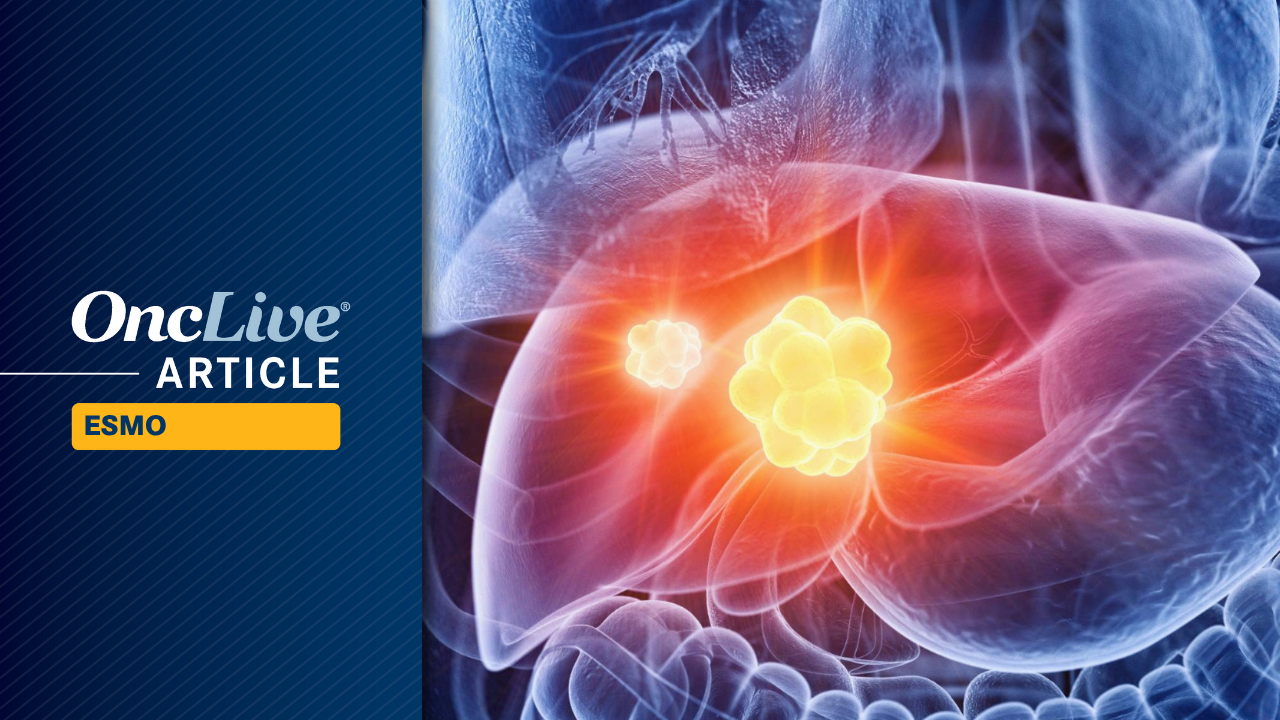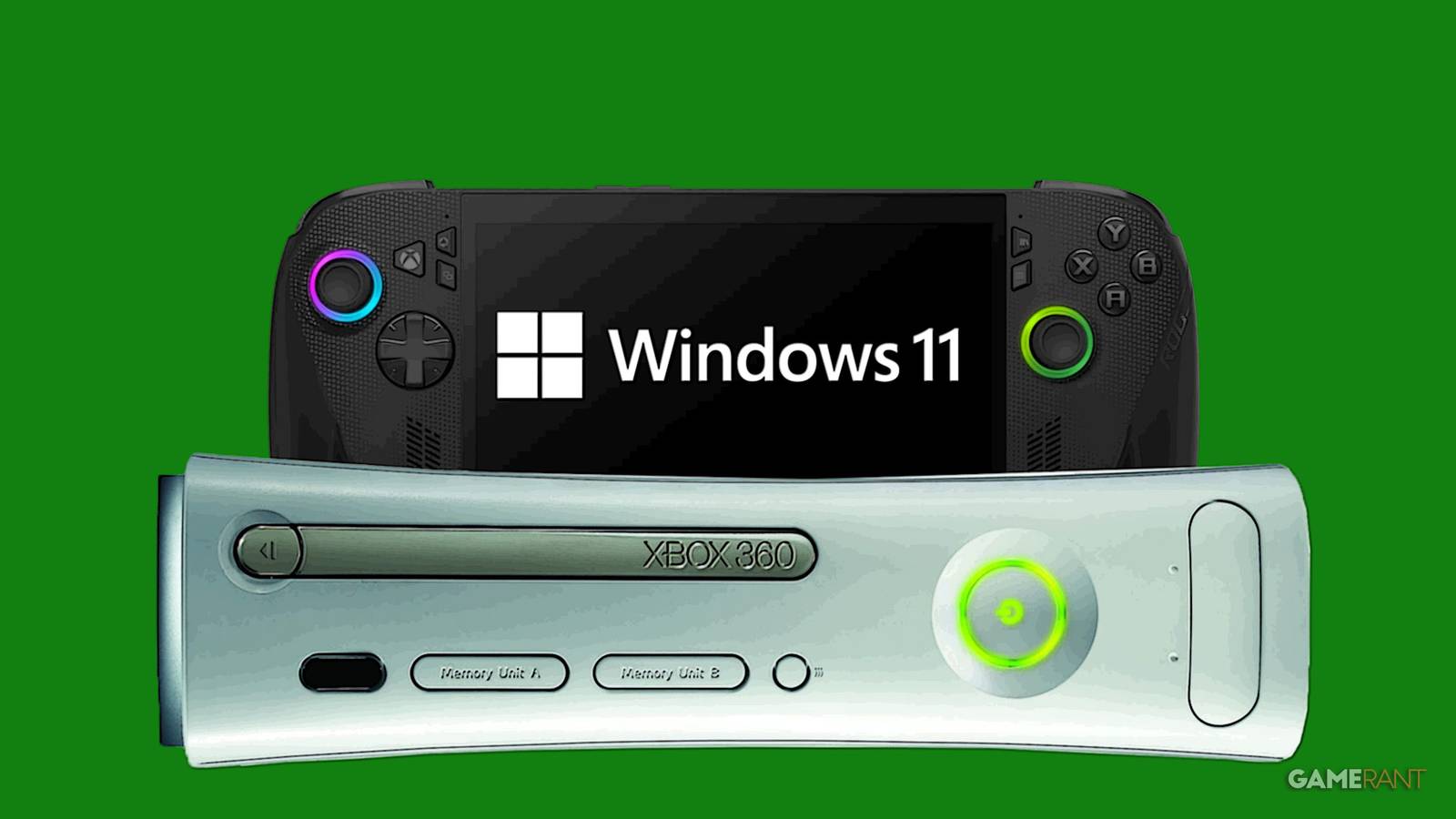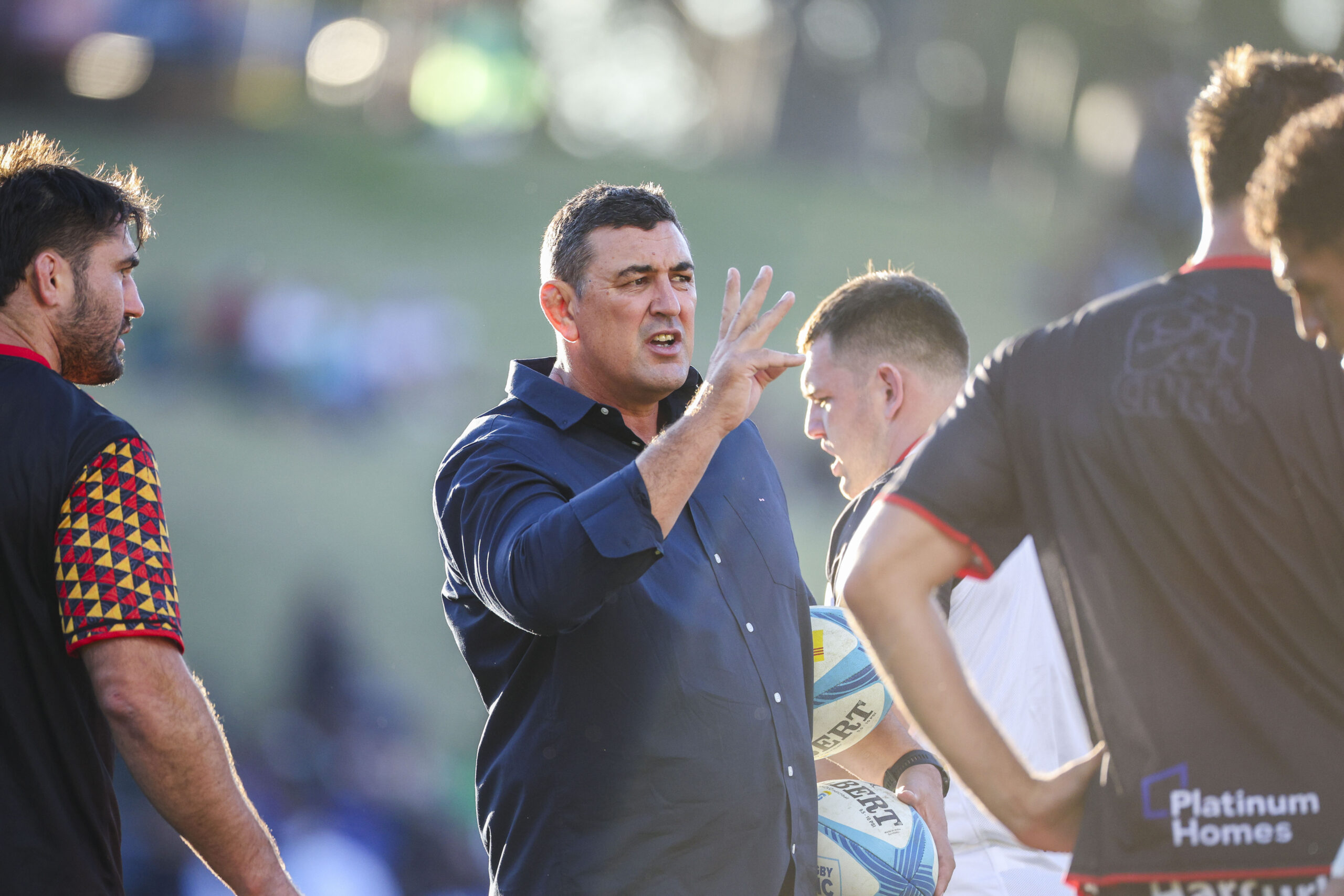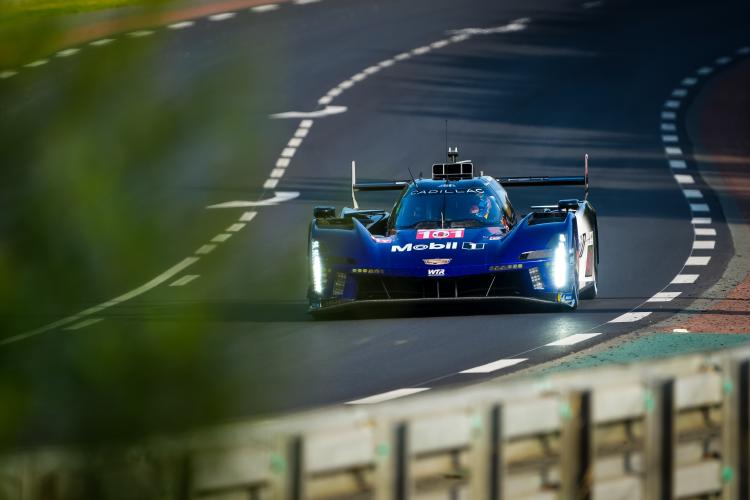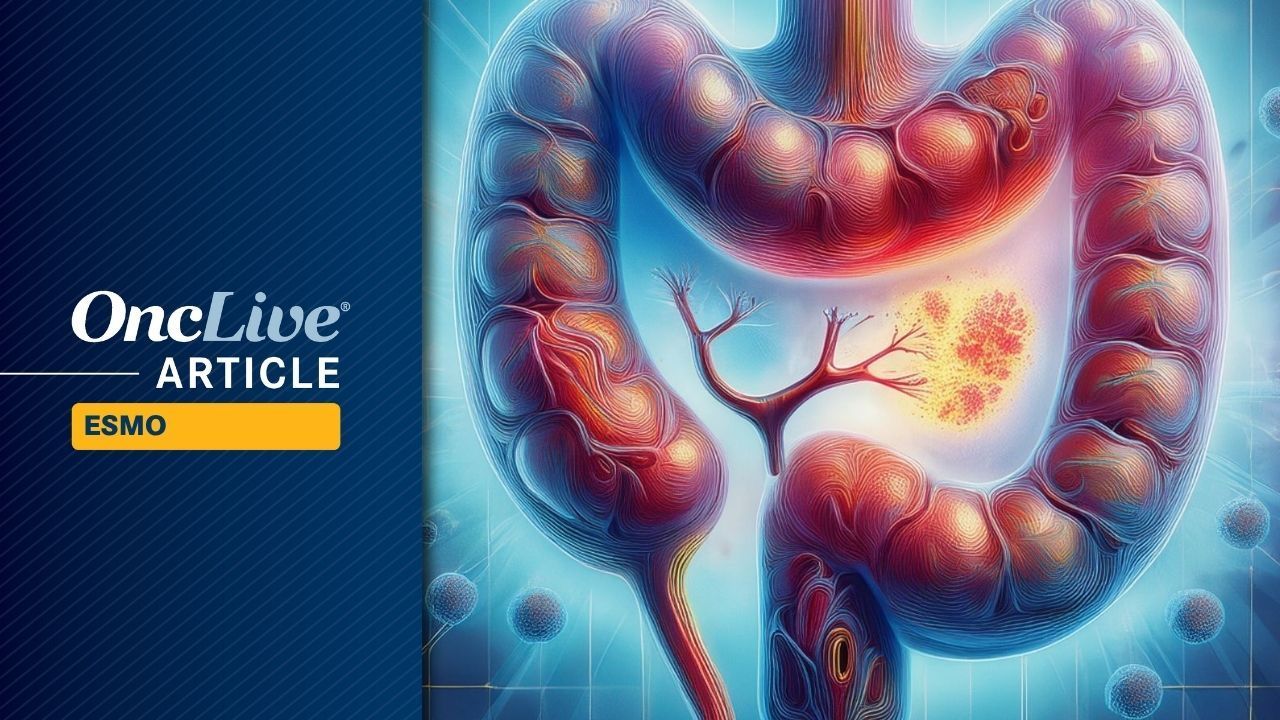Tiragolumab (MTIG7192A) plus atezolizumab (Tecentriq) and bevacizumab (Avastin) did not provide a statistically significant progression-free survival (PFS) benefit vs placebo plus atezolizumab and bevacizumab in patients with untreated locally advanced or metastatic hepatocellular carcinoma (HCC), according to findings from the phase 3 IMbrave152/SKYSCRAPER-14 study (NCT05904886) that were presented during the 2025 ESMO Congress.
In turn, the coprimary end point of investigator-assessed PFS was missed. Patients treated with placebo plus atezolizumab and bevacizumab (n = 338) had an investigator-assessed median PFS of 8.2 months (95% CI, 7.0-9.7) vs 8.3 months (95% CI, 7.1-9.8) in patients treated with tiragolumab plus atezolizumab plus bevacizumab (HR, 0.97; 95% CI, 0.8-1.2; stratified log-rank P =.7464).
Overall survival (OS) data remain immature and are not anticipated to reach statistical significance, according to study authors.
“These data, now from a double-blind, placebo-controlled study of over 600 patients, confirm the activity of atezolizumab plus bevacizumab in the management of this population, as well as the safety, and moving forward, we will hopefully learn a lot from the study on how to best decide to move forward in advancing care for our patients with HCC,” study author and presenter, Richard S. Finn, MD, stated.
Finn is a professor of medicine at the David Geffen School of Medicine, UCLA, and director of the UCLA Liver Cancer Program.
Design and Baseline Characteristics of the IMbrave152/SKYSCRAPER-14 Study
The IMbrave152/SKYSCRAPER-14 study is a double-blind, placebo-controlled, randomized, global trial that enrolled 669 patients between September 14, 2023, and September 23, 2024. Eligible patients were 18 years of age or older with unresectable locally advanced or metastatic HCC, an ECOG performance status of 0 or 1, and Child-Pugh A liver function.
Patients were excluded from the study if they had received prior systemic therapy for advanced disease or experienced recurrence within 26 months of completing adjuvant treatment. Patients were randomly assigned 1:1 to receive either tiragolumab at 600 mg plus atezolizumab at 1200 mg plus bevacizumab at 15 mg/kg intravenously (IV) every 3 weeks, or placebo plus atezolizumab at 1200 mg and bevacizumab at 15 mg/kg IV every 3 weeks.
Treatment continued until loss of clinical benefit or unacceptable toxicity, and crossover was not allowed. Imaging assessments were performed every 6 weeks, with a 1-week margin. Stratification factors included geographic region (Asia and Africa vs the rest of the world, including Japan), macroscopic vascular invasion (MVI) and/or extrahepatic spread (EHS; presence versus absence), baseline AFP level (≥ 400 ng/mL vs < 400 ng/mL), and HCC etiology (viral vs non-viral).
The study’s primary end points were investigator-assessed PFS per RECIST 1.1 criteria and OS. Key secondary end points included objective response rate (ORR), duration of response (DOR), PFS and OS rates at select time points, safety, and patient-reported outcomes (PROs).
The baseline characteristics were generally well balanced between the tiragolumab and the placebo arms. The median age for all patients was 44.5 years, with 82.2% of patients aged 65 years or older. The majority of patients were male (87.6% in both arms).
The most common geographic region was Asia/Asian Pacific/Australia (tiragolumab, 52.0%; placebo, 48.1%), followed by Europe and Middle East/North America (18.7%; 17.5%). Hepatitis B was the most frequent HCC etiology (65.6%; 59.8%), whereas 76.1% of all patients had an ECOG performance status of 0 or 1. Most patients had Barcelona Clinic Liver Cancer (BCLC) stage B or C disease (75.9% overall) and a Child-Pugh score of A5 or A6 (63.5% overall).
Other key characteristics were similar: macrovascular invasion and/or extrahepatic spread was present in 36.7% of all patients, AFP levels of 400 ng/mL or higher were seen in 25.9% of all patients, and 38.9% of the overall population had received prior local cancer therapy.
Exploratory Subgroup Analysis
An exploratory subgroup analysis of 909 patients showed that adding tiragolumab to atezolizumab plus bevacizumab was numerically associated with an improvement in median investigator-assessed PFS of 8.3 months vs 8.2 months (HR, 0.98; 95% CI, 0.8-1.2) compared with the atezolizumab plus bevacizumab arm.
Treatment benefit varied across prespecified baseline characteristics. Patients with baseline AFP levels less than 400 ng/mL appeared to derive the greatest benefit (HR, 0.74; 95% CI, 0.6-1.0), with a median investigator-assessed PFS of 9.8 months vs 5.5 months in the control arm. Conversely, patients with an ECOG performance score of 1, those in the Americas excluding Japan, those with high MVI and/or EHS (HR, 1.18; 95% CI, 0.9-1.5), and those with a Child-Pugh score A8 (HR, 1.18; 95% CI, 0.8-1.7) appeared to have a diminished or unfavorable treatment effect.
The median investigator-assessed PFS was longer in the experimental arm for nearly all subgroups, with notable exceptions including HCC etiology of hepatitis C (7.7 months vs 12.8 months) and the Child-Pugh A8 subgroup (4.7 months vs 5.7 months).
Understanding Additional Outcomes of the IMbrave152/SKYSCRAPER-14 Study
The ORR was 29.9% for the tiragolumab group with a complete response (CR) rate of 2.1% and a partial response (PR) rate of 27.8%. In the placebo group, the ORR was 26.0%, the CR rate was 1.8%, and the PR rate was 24.3%.
Among patients receiving the tiragolumab combination, there were 99 responders. Of these, 33.3% of patients experienced a subsequent event. The median DOR was 15.0 months (range,13.9-not estimable [NE]).
Among those receiving placebo, there were 88 responders. Of these, 38.6% experienced a subsequent event. The median DOR was 13.2 months (range, 10.1-NE).
Stable disease was reported in 48.0% of patients in the tiragolumab group vs 48.8% of those in the placebo group; progressive disease was reported in 16.3% vs 18.9% of patients, respectively, and the disease control rates were 77.9% vs 74.9%, respectively.
How Safe Is Tiragolumab Plus Atezolizumab and Bevacizumab?
The safety profile of the tiragolumab plus atezolizumab and bevacizumab combination (n = 332) was similar to that of the placebo plus atezolizumab and bevacizumab regimen (n = 333), though patients in the tiragolumab arm experienced slightly higher rates of adverse effects (AEs).
Nearly all patients in both arms reported AEs of any cause (tiragolumab arm, 98.8%; placebo arm, 97.6%). Grade 3/4 AEs were observed in 53.6% of patients in the tiragolumab-treated group, and grade 5 AEs were seen in 8.4% of patients in this arm. The rates of grade 3/4 and grade 5 AEs in the placebo arm were 47.7% and 7.2%, respectively.
Serious AEs occurred in 45.8% of patients in the tiragolumab arm and 38.4% of those in the placebo arm. Drug-related AEs were reported in 92.8% and 87.1% of patients, respectively. AEs led to withdrawal of tiragolumab in 73.8% of patients receiving it, with 18.4% of those patients requiring systemic corticosteroids. AEs resulted in bevacizumab withdrawal in 64.5% of patients in the tiragolumab group and 60.7% of those in the placebo group.
Disclosures: Finn reported serving as a Principal Investigator for Merck/Eisai and Roche. He has received research funding from Bristol-Myers Squibb, Merck/Eisai, Pfizer, and Roche/Genentech. His roles as a speaker, consultant, or advisor involve relationships with AstraZeneca, Bristol-Myers Squibb, Chugai, Guerbet, Merck/Eisai, Novartis, Pfizer, Roche/Genentech, and Zai Labs. He is also a steering committee member for Bristol-Myers Squibb, Merck/Eisai, and Roche.
Reference
Finn RS, Singal AG, Cheng A, et al. IMbrave152/SKYSCRAPER-14: a phase III study of first-line tiragolumab + atezolizumab + bevacizumab vs placebo + atezolizumab + bevacizumab for patients with untreated locally advanced or metastatic hepatocellular carcinoma. Presented at: 2025 ESMO Congress; October 19, 2025; Berlin, Germany. Abstract LBA50.
